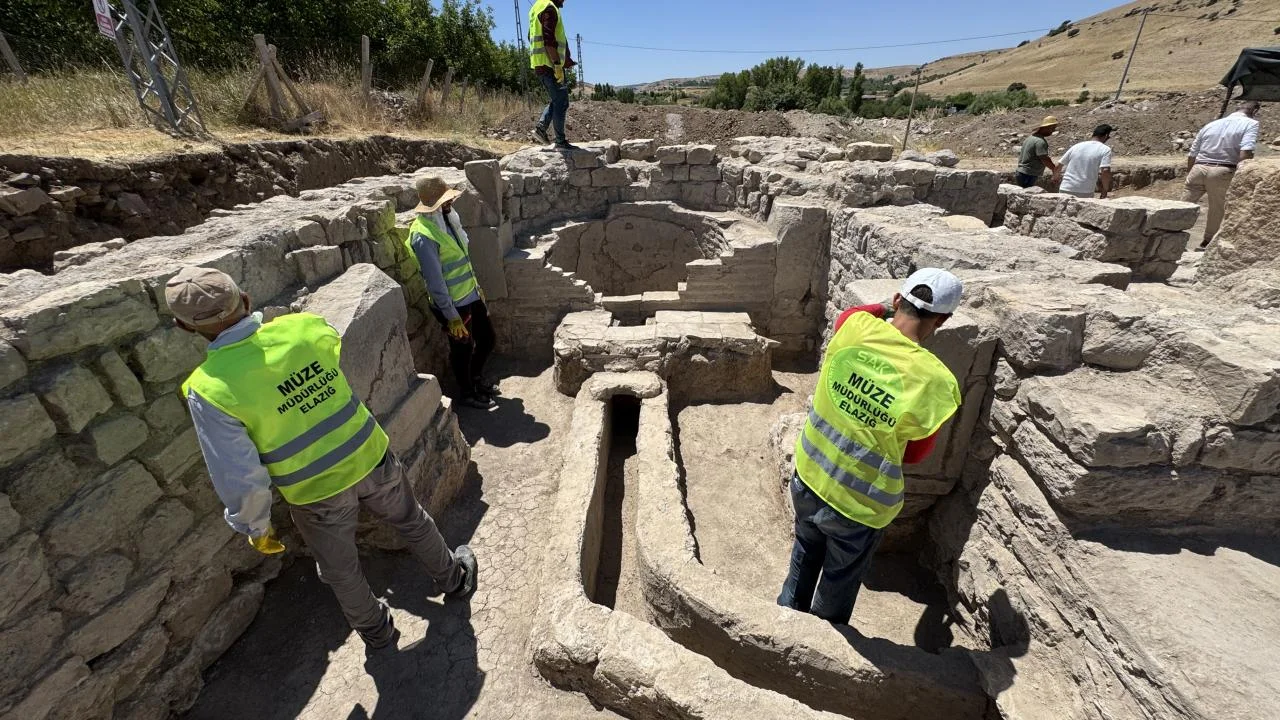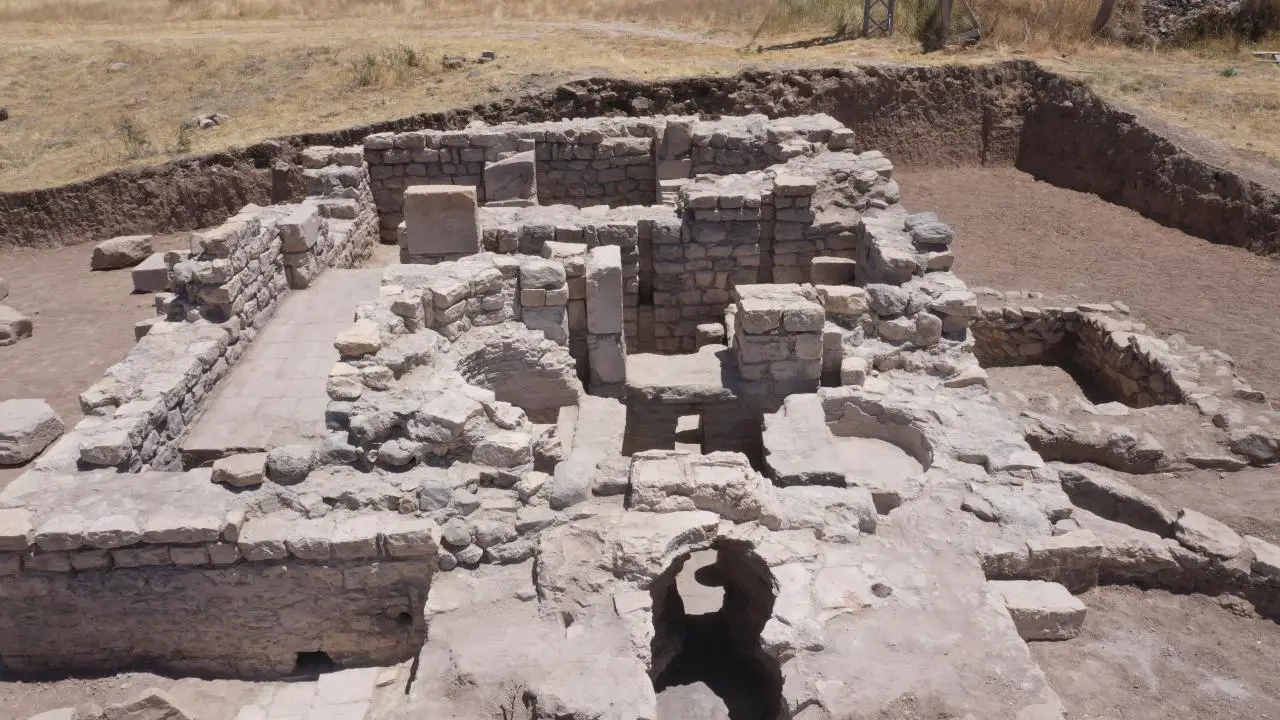A team of archaeologists from the Ministry of Culture and Tourism have unearthed a 1,700-year-old bathing complex in the village of Elazığ, eastern Türkiye.
Traces of Roman occupation were first identified when a local farmer uncovered evidence of a mosaic back in 2023 while planting saplings on his farm.
Unearthing the mosaic revealed a large, decorated surface area with geometric patterns and ornate forestry depictions of woodland and wild animals.
This discovery prompted a geophysical survey of the surrounding area, leading to recent excavations in 2025 that confirmed the presence of a large Roman bath complex dating from around 1,700-year-ago during the Late Roman period.

Measuring 75 square metres, the complex contains a sophisticated water management system that directed water to its pools, sweat chambers, and bathing rooms, in addition to underfloor heating via a hypocaust system.
Archaeologist Emre Çayır, said: “When considering the technical features of the bathhouse structure, it has the distinction of being the first of its kind within the borders of Elazığ. It is also important that the architectural plan has been preserved and survives to the present day.”
Çayır noted that the bathhouse provides new insights into the technical construction methods of the era and the region’s emphasis on public health during the Roman period.”
Provincial Director of Culture and Tourism Ahmet Demirdağ explained that the bathhouse was found 70 metres south of the mosaic and is believed to be part of a wider urban settlement yet to be explored.
Header Image Credit : AA
Sources : Anadolu Agency







